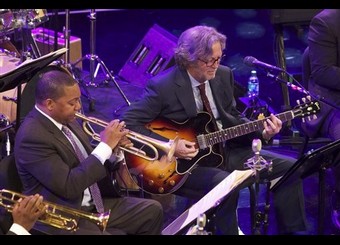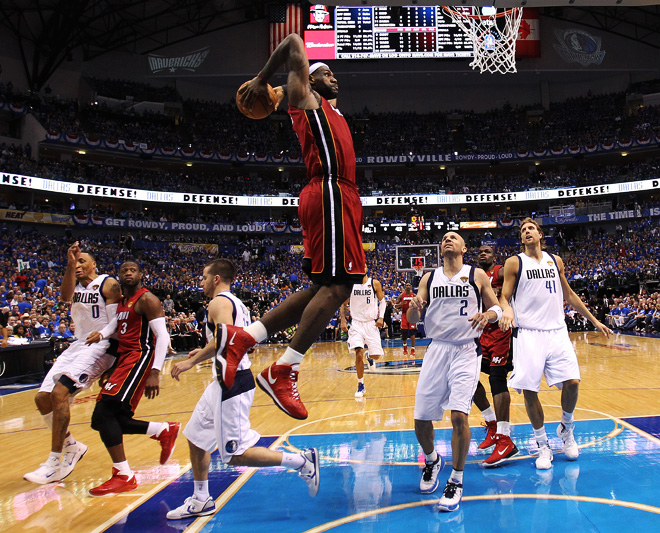Improvisational teacher decision-making during a lesson (as opposed to decisions made in planning lessons) are often misunderstood by policymakers, educational pundits, and researchers, whose last visit to a classroom may have been when they were students. State and local policymakers who make consequential decisions about school budgets, professional development, and evaluating teachers need a deeper understanding of classroom teaching, particularly the frequent and quick decisions teachers make while teaching a lesson. Teachers consider rapid, non-stop decisions as simply part of their job not fully realizing that their instantaneous decision-making compares nicely to expert jazz musicians and professional basketball rebounders .
When top jazz musicians select notes from a chord to improvise a melody, stellar basketball players drive toward the basket on a pick-and-roll, and effective teachers ask questions of students, the cascade of instantaneous micro-decisions that occurs in the heads of trumpet player Wynton Marsalis, the Dallas Mavericks’ Luka Doncic and kindergarten teacher Vivian Paley would stun most non-musicians, non-basketball players, and non-teachers.
Consider jazz and the swift decisions a Wynton Marsalis makes as he improvises. Jonah Lehrer describes a neuroscientist who used MRIs to study brain activity of jazz musicians improvising. one center that showed much activity was during improvisation had been identified for its function in language and speech. The neuroscientist argued that creating new melodies depends on that part of the brain where sentences are invented, where every musical note is like a word. Lehrer continues:
“Of course, the development of these patterns requires years of practice, which is why [the neuroscientist] compares improvisation to the learning of a second language. At first, it’s all about the vocabulary, as students must memorize a dizzying number of nouns, adjectives and verb conjugations. Likewise, musicians need to immerse themselves in the art, internalizing the intricacies of Miles and Coltrane. After years of study, the process of articulation starts to become automatic – the language student doesn’t need to contemplate her verb charts before speaking, just as the musician can play without worrying about the movement of his fingers. It’s only at this point, after expertise has been achieved, that improvisation can take place. When the new music is needed, the notes are simply there, waiting to be expressed.”

Turn now to the act of basketball players rebounding as an instance of super-quick decision-making “that reflects an astonishing amount of cognitive labor.” Here Jonah Lehrer points out the subtle and swift decisions rebounders make.

“The reason we don’t notice this labor is because it happens so fast, in the fraction of a fraction of a second before the ball is released. And so we assume that rebounding is an uninteresting task, a physical act in a physical game. But it’s not, which is why the best rebounders aren’t just taller or more physical or better at boxing out – they’re also faster thinkers. This is what separates the [Lebron James] and Kevin Loves … from everyone else on the court: They know where the ball will end up first.”
Here is where I turn from improvising jazz and basketball rebounding to classroom decision-making. Non-teachers would be amazed at the total number of decisions teachers make during a 45-minute lesson, the frequency of on-the-fly, unplanned decisions, and the seemingly effortless segues teachers make from one task to another. Decisions tumble out one after another in questioning students, starting and stopping activities, and minding the behavior of the class as if teachers had eyes in the back of their heads.
What decisions do teachers make during lessons?
I know of no MRIs that neuroscientists have used with teachers in experiments on classroom decisions. Nonetheless, the number and frequency of decisions teachers make during a lesson have been examined sporadically (mostly in the 1970s and 1980s) through simulations and video analysis but seldom since then. (Readers who know of recent studies, please let me know).
In distinguishing between planning lessons and actual classroom teaching–what academics call “interactive” teaching– researchers found that teacher-made routines governed the total number and frequency of decisions. However, these routines for managing groups of 25-35 while teaching content and skills—taking attendance, going over homework, doing seat-work, asking questions–were unpredictably interrupted by the unexpected (e.g., upset students, PA announcements, student questions, equipment breakdown). Thus, spontaneous, unplanned decisions had to be made. Both the expected and unexpected piled up teacher decisions in each lesson.
*Researchers Hilda Borko and Richard Shavelson summarized studies that reported .7 decisions per minute during interactive teaching.
*Researcher Philip Jackson (p. 149) said that elementary teachers have 200 to 300 exchanges with students every hour (between 1200-1500 a day), most of which are unplanned and unpredictable calling for teacher decisions, if not judgments.
In short, teaching because it is a “opportunistic”–neither teacher nor students can say with confidence what exactly will happen next–requires “spontaneity and immediacy” (Jackson, p. 166, 152).
Effective teachers, then, like top jazz musicians and basketball rebounders improvise–decide on the spot–as they deal with both the routine and unexpected in teaching a lesson.

I have been a (mediocre but enthusiastic) jazz trombonist my entire adult life. I cannot begin to explain how much teaching in a classroom felt, on some gut level, exactly like playing jazz. But this piece is exactly on point.
Thank you, Peter. I appreciated very much your comment.
Hi Larry,
Iâm attaching a chapter on improvisational teaching that a former PhD student and I wrote as the concluding chapter for a book edited by Keith Sawyer. Lisa is an improvisational actor and taught classes on improv while a PhD student at Stanford. Iâm curious how you see our framing of improvisational teaching as similar to. and different from your conception.
I always enjoy your blogs!
Hilda
Hilda Borko
Charles E. Ducommun Professor of Education
Graduate School of Education
Stanford University
520 Galvez Mall
Stanford, CA 94305-3096
Phone (message): 650-721-1660
Fax : 650-723-3654
email: hildab@stanford.eduhildab@stanford.edu
I got the chapter, Hilda. On my list of things to read. Thank you.
I have the privilege of knowing a lot of Latin jazz musicians, including a Grammy winner (my friends have house concerts 2xs per week down the street here in Philly). We’ve talked about what makes a great jazz musician and the answer is unanimous–practice, practice, practice. For a genre noted for its improvisation, memorization of different combos plus those beats/sounds from different cultures is at the root of the music.
For teachers, this applies, particularly in fields where deeper content knowledge can enhance one’s practice. For students, internalizing the knowledge so that it can be recalled readily–even through memorization–is key.
I agree that practice, practice, and more practice is inherent to playing jazz, basketball, and teaching. The linkage between practice and improvisation is strong and one worth writing about. Thanks for commenting, David.
Like the best rebounders and improvisers, experienced teachers make it look easy. Perhaps that’s why so many think they could do it too?
You might well be right, Christine.
Pingback: The Mental Energy of Teaching | Teacher in a strange land
Studies have shown that expert tennis players know where a ball is being struck toward them before the ball is off of the racquet. There are many examples of such studies that show that the mental aspects of sports are as important as the physical ones.
Steve Ruis, Author of “A Guide to the Mental Game of Archery”
Thanks for taking the time to comment, Steve. Both the Super Bowl and Little League baseball support your point.
Pingback: Because it’s impossible, we must collaborate – Rethinking Normal